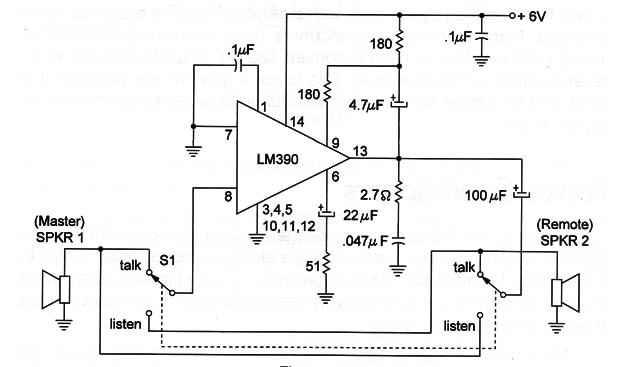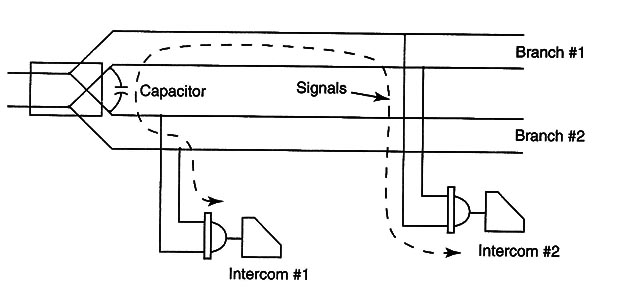It is formed by a low-power audio amplifier where the loudspeaker is used to both reproduce the sounds and to act as a microphone. Figure 1 shows a simple circuit of an intercom using an IC from National Semiconductor (Now Texas Instruments).

The switch changes the function of the loudspeakers, plugging them into the input when they are used as microphones (to talk) and as loudspeakers (to hear). Other types can use separated elements for these functions, and electret microphones are used.
The same amplifier can also be used to reproduce the sound of the doorbell. In the basic installation, the central unit is placed inside the building and powered from the AC power line, cells, or batteries.
The remote unit is placed at the front door or entrance of the building and two types of wires can be used. In some cases, separated wires for the bell and audio signals are used. The audio signals, in some cases, are conducted by screened cables.
Another type of intercom is one that uses the AC power line to transport the signal between the stations. This means that you only need to plug the units into outlets (Figure 2).

High-frequency signals are superposed to the voltage transporting the audio signals. Common types use PLLs to decode the signals in the range between 50 and 200 kHz (refer the site to articles on PLLs).
The principal problem found when working with this kind of intercom is that in some cases the units are plugged into outlets of different branches in an electric installation, as shown in Figure 3.

Even in adjacent rooms, the signals must travel a large distance. Sometimes they are unable to pass from one branch to another. The presence of inductive elements between the branches of the installations can stop the signals. Installing a 0.1 µF/400V paper or polyester capacitor between the branches where the signals can't pass will solve the problem.
Many versions of commercial intercoms can be purchased in many specialized stores and easily installed by a reader, even one just beginning.




